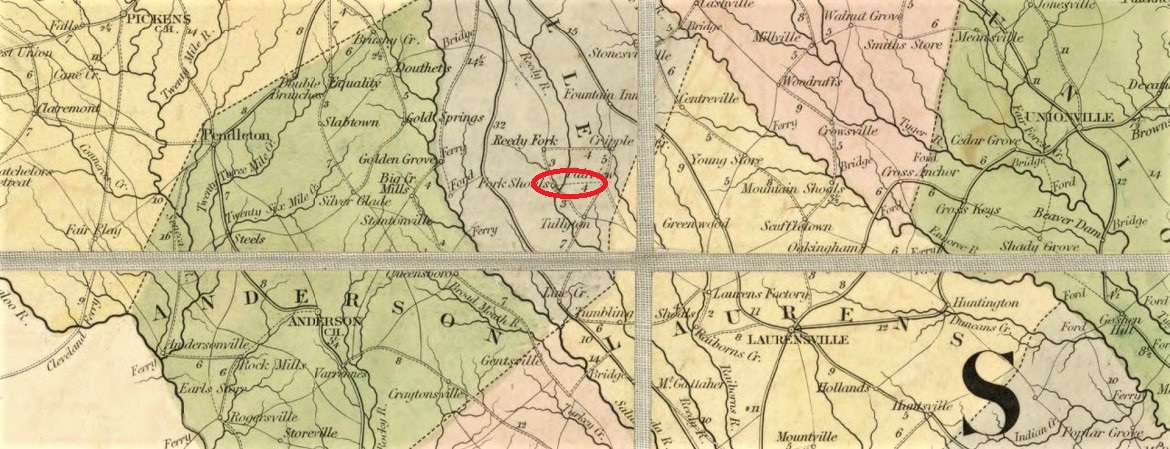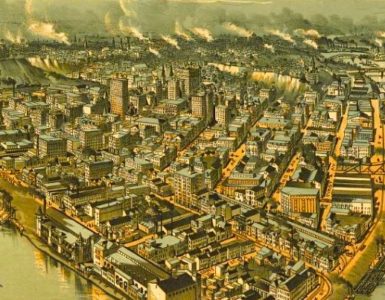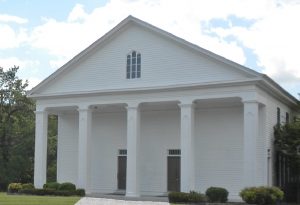 When I have occasion to visit churches while traveling, there are three churches I particularly enjoy worshipping in and wandering their properties because of their great histories and the historic appeal of their facilities. One place of worship is the Independent Presbyterian Church, Savannah, Georgia, where the Word has been preached for over 250 years in a succession of buildings culminating in the current beautiful sanctuary. As one approaches the city the tall steeple can be seen piercing the city skyline. Another church I enjoy, though in a cooler season than summer, is First Presbyterian Church in the hub of early South Carolina Presbyterianism in Columbia, where each week the doctrines of Scripture and its grace as expressed in the Westminster Confession of Faith have been taught by ministers including such notables of the past as James H. Thornwell, Joseph R. Wilson, and B. M. Palmer. However, at the top of the list of my three favorite historic churches is the oldest Presbyterian Church in Greenville County which is the Fairview Church, Presbyterian Church in America (PCA), in Fountain Inn. The Bible has been taught to its congregation since it was organized as a particular church in 1786.
When I have occasion to visit churches while traveling, there are three churches I particularly enjoy worshipping in and wandering their properties because of their great histories and the historic appeal of their facilities. One place of worship is the Independent Presbyterian Church, Savannah, Georgia, where the Word has been preached for over 250 years in a succession of buildings culminating in the current beautiful sanctuary. As one approaches the city the tall steeple can be seen piercing the city skyline. Another church I enjoy, though in a cooler season than summer, is First Presbyterian Church in the hub of early South Carolina Presbyterianism in Columbia, where each week the doctrines of Scripture and its grace as expressed in the Westminster Confession of Faith have been taught by ministers including such notables of the past as James H. Thornwell, Joseph R. Wilson, and B. M. Palmer. However, at the top of the list of my three favorite historic churches is the oldest Presbyterian Church in Greenville County which is the Fairview Church, Presbyterian Church in America (PCA), in Fountain Inn. The Bible has been taught to its congregation since it was organized as a particular church in 1786.
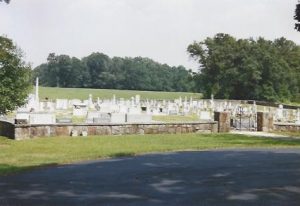 The simple but impressive design of the Fairview Church is common in South Carolina. The current sanctuary is the fourth used by the congregation having been preceded by two made with logs and a third constructed with brick. The building with its impressive portico was completed in 1858, and the mass and height of the columns reminds those passing through the doors for services of the greatness of God. The simple and tasteful white frame building is reminiscent of both the Long Cane Associate Reformed Presbyterian Church near Troy and the Bethel Presbyterian Church in America in Clover. The interior of Fairview is simple having not only antique wooden pews on the main floor but also rustic and simple backed benches in the gallery used during slavery in antebellum years. As one stands in the portico and surveys the area the setting is idyllic and peaceful with an occasional horse to be seen in the distance.
The simple but impressive design of the Fairview Church is common in South Carolina. The current sanctuary is the fourth used by the congregation having been preceded by two made with logs and a third constructed with brick. The building with its impressive portico was completed in 1858, and the mass and height of the columns reminds those passing through the doors for services of the greatness of God. The simple and tasteful white frame building is reminiscent of both the Long Cane Associate Reformed Presbyterian Church near Troy and the Bethel Presbyterian Church in America in Clover. The interior of Fairview is simple having not only antique wooden pews on the main floor but also rustic and simple backed benches in the gallery used during slavery in antebellum years. As one stands in the portico and surveys the area the setting is idyllic and peaceful with an occasional horse to be seen in the distance.
Across the street from the church is a frame house that was used for the manse until 1966 when it was modified to serve as a social hall until recently replaced by a larger multi-purpose building behind the sanctuary. Another building on the property is a manse constructed of masonry. The church office, historical display room, and a meeting room for the church officers are also on the property. The stone fence around the cemetery protects the graves of many saints of old awaiting the day when the trump will sound and the dead in Christ will be raised. One grave marker, dated January 11, 1791, remembers what must have been a horribly sad day when the Alexanders’ five-year old daughter, Margaret, passed from this life to the next. There are also ministers of the church buried in the cemetery, veterans of the wars from the earliest days of the congregation, and a special memorial was set several years ago to remember the slaves buried during the Antebellum years.
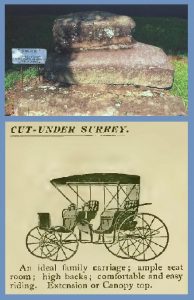 One photograph in this collection shows the “Upping Block.” In the days when going to church meant riding horses or bouncing along in wagons and carriages powered by true and not mechanical horsepower, these three stone steps were necessary to maintain a lady’s dignity and provide safe access for others. Imagine a Victorian woman in her lengthy dress and petticoats, an elderly person suffering from arthritis, or a young child trying to leave or access their conveyance without the simple rock steps. Maybe these devices need to be recovered from the equestrian-era to provide access to some of the large sports utility vehicles and pick-up trucks that are so common in the area. Sometimes a good old idea may be repurposed for new applications.
One photograph in this collection shows the “Upping Block.” In the days when going to church meant riding horses or bouncing along in wagons and carriages powered by true and not mechanical horsepower, these three stone steps were necessary to maintain a lady’s dignity and provide safe access for others. Imagine a Victorian woman in her lengthy dress and petticoats, an elderly person suffering from arthritis, or a young child trying to leave or access their conveyance without the simple rock steps. Maybe these devices need to be recovered from the equestrian-era to provide access to some of the large sports utility vehicles and pick-up trucks that are so common in the area. Sometimes a good old idea may be repurposed for new applications.
Old churches like Fairview, depending on how extensively and how often they have been renovated, provide a step back in time physically and spiritually. Historical village museums provide a wonderful opportunity to see what life was like in the past, but their churches are often presented as quaint relics of a naïve religion that has no significance today. Museum interpreters present old churches as prizes of architecture and detail, but their significance is measured by which politicians, soldiers, authors, and entrepreneurs were seated in their pews over the years. However, old churches that are committed to Scripture in their ministries and maintain the antiquity of their facilities provide not only current opportunities for worship and fellowship, but they also remind us of the faithful who have gone before and the cloud of witnesses gathered due to the continuity of the Covenant of Grace. There are some who eschew the past simply because it is old, but ignoring or suppressing the past denies the Covenant because it is necessarily historical, after all, it is the “covenant of Abraham, Isaac, and Jacob” and it extends from generation to generation. Thus, old churches and their properties are memorials of the Covenant of Grace. To sit in a richly patinated and often comfort-challenged pew with its worn, split, creaking, and scratched wood created by over one-hundred-fifty years of worshippers listening with varying degrees of attentiveness, squirming when their behavior was rebuked by the Word of God, or even dozing uncontrollably, provides an opportunity for congregants to sense the covenant bond with the spiritual seed of Abraham. Christians are to be people of history because the Covenant is historical.
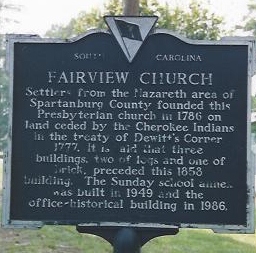 In the Fairview Church, as in Independent Presbyterian Church, Savannah, First Presbyterian Church, Columbia, and many other old churches that have not had their sanctuaries modified to fit the trends of current fashion, it is clear that the Word of God was and is important. The pulpit is the center of attention, it is higher than the congregation seated on its main floor, upon it is a large open Bible, and its purpose is to provide the place from which God’s Word is delivered to God’s people by God’s messenger. Historic buildings are wonderful reminders of days gone by, but historic churches are marvelous reminders of the covenant faithfulness of God to his people in the past.
In the Fairview Church, as in Independent Presbyterian Church, Savannah, First Presbyterian Church, Columbia, and many other old churches that have not had their sanctuaries modified to fit the trends of current fashion, it is clear that the Word of God was and is important. The pulpit is the center of attention, it is higher than the congregation seated on its main floor, upon it is a large open Bible, and its purpose is to provide the place from which God’s Word is delivered to God’s people by God’s messenger. Historic buildings are wonderful reminders of days gone by, but historic churches are marvelous reminders of the covenant faithfulness of God to his people in the past.
Barry Waugh
Notes—This brief history of Fairview Church has been gleaned from Mary Lou Stewart Garrett’s History of Fairview Presbyterian Church of Greenville County, South Carolina, which was published by order of the Session of Fairview Presbyterian Church, 1986. The picture of the surrey is from the advertising flyer titled, The E. A. Richmond Carriage Company, Carriages, Sleighs, and Harness, circa 1892, which was located in the digital stacks of Internet Archive. Readers may also find the short series of articles about church architecture and design on Presbyterians of the Past enjoyable; it can be accessed by going to the website homepage, clicking the “Categories” button on the toolbar, and then selecting the “Church Design” button.


